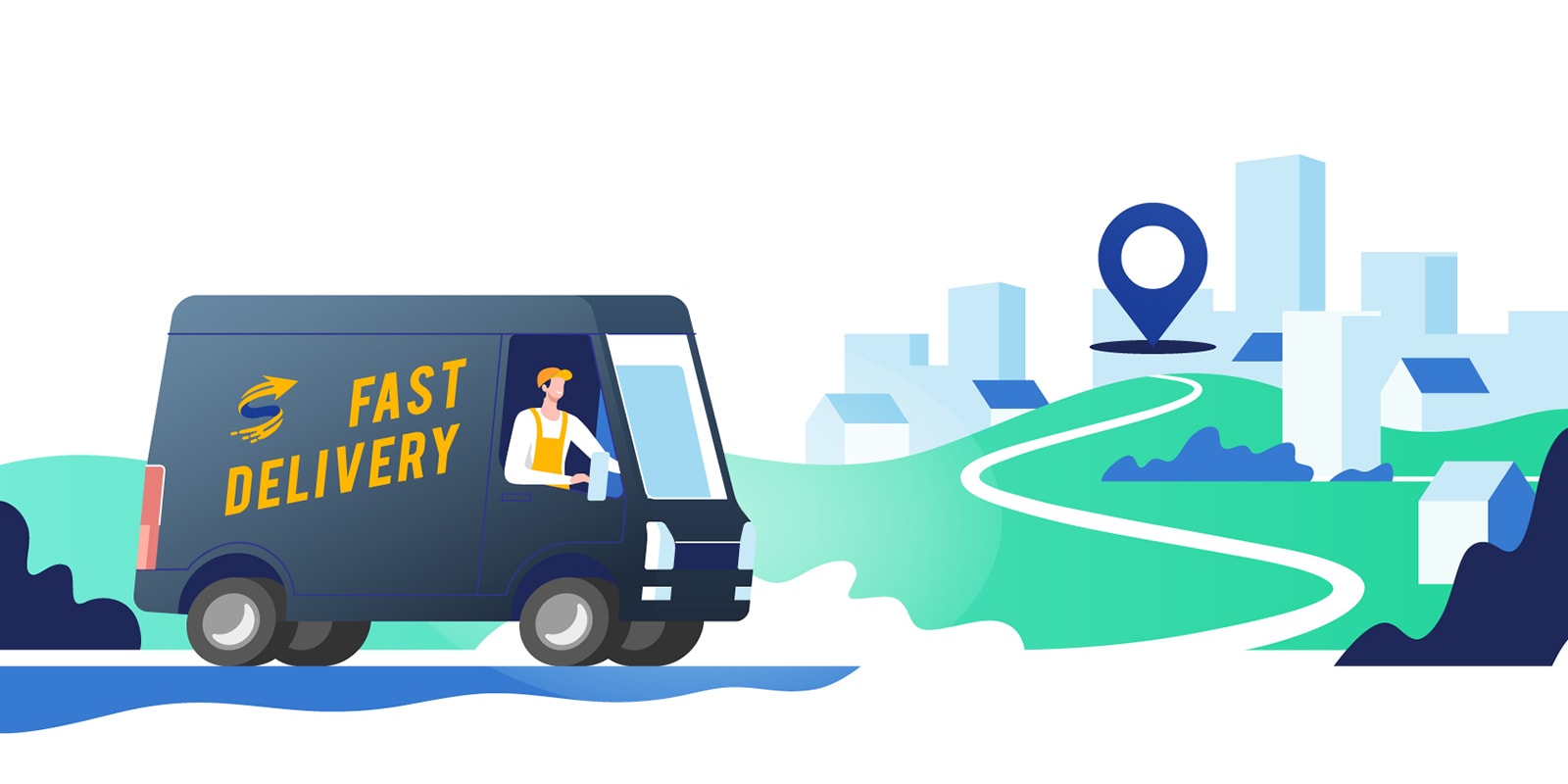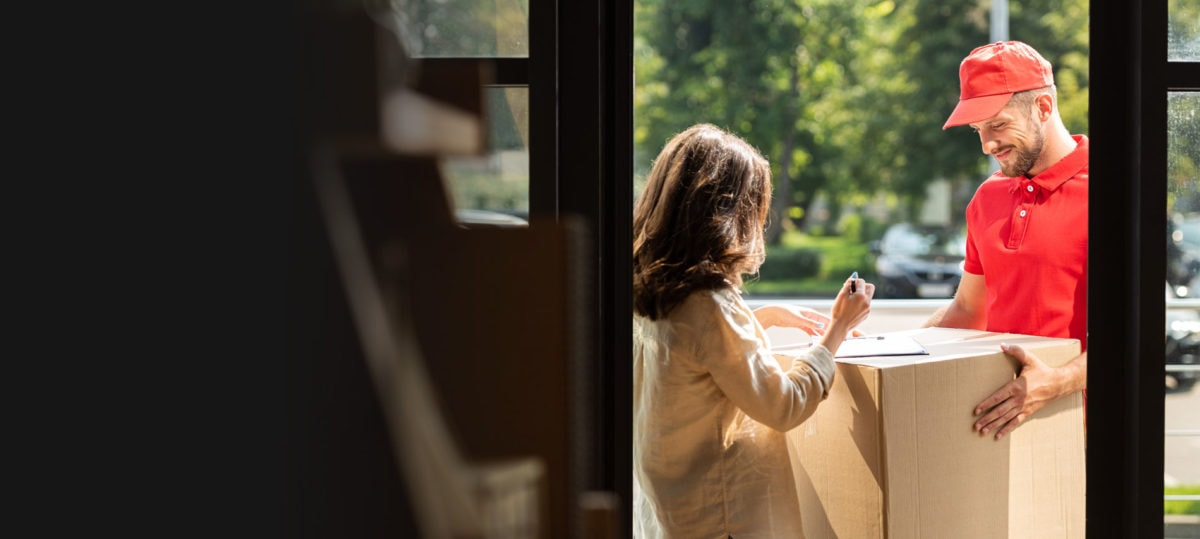MenuMenu
- Compare. Save. Ship.
- Main Menu
- How It Works?
- Shipping Services
- eCommerce
- Learn

There’s no doubt that today’s consumers expect fast and accurate shipping every time they shop online. And because of COVID and stay-at-home orders, an increasing number of Canadians are now buying everything online, which creates new challenges for last-mile delivery carriers nationwide.
Before the COVID-19 pandemic, it was estimated that the same-day delivery market will be worth USD 9.6 billion by 2025, a substantial increase from a market worth of USD 3.5 billion in 2017. In the current situation, those figures can only go up.
The market is mainly driven by the increasing demand of e-commerce and the rise in disposable income in households located in urbanized areas. Thanks to good infrastructure and innovative techniques that allow carriers to process and deliver the orders within one or two days, North America currently has the highest shares of the market.
But consumer expectations are also growing. 93% of consumers expect to be able to check on their orders at all times - from the moment they buy the products until the products arrive at their front doors. And 47% of consumers say that they won’t order again from a brand that lacks order tracking visibility.
As more consumers want faster deliveries, the last leg of the entire shipping process - last-mile delivery - becomes the most challenging part of the supply chain management.

Last-mile delivery is a term used in the logistics industry to describe the last part of the delivery process, when a package is transported from a hub to its final destination.
Last-mile delivery is a cost-effective way of delivering packages in a short amount of time. Shipping couriers pick up the packages from retailers/wholesalers/suppliers and transfer them to a regional/local hub, where the packages are processed. The packages are then picked up by a carrier and delivered to their intended destination.
Last-mile delivery is an efficient and cost-effective way of getting your packages to your customers. This type of service ensures that your customers receive their packages in a short amount of time, which is important for creating and maintaining customer loyalty.
If your customers don’t receive their packages fast enough, chances are they’ll look for another seller next time they want to buy something.
Amazon made two-day shipping the new norm, and now other retailers have to fall in line in order to maintain their customer base. Offering fast or free shipping are now considered great marketing strategies to attract new clients because they can help you generate repeat purchases.
Last-mile delivery completely changed the fulfillment industry. Order fulfillment means completing the entire process of receiving an order, processing it, packing the products, picking up the order, and delivering it to end customers.
When a business uses a fulfillment agency that offers last-mile delivery, it ensures that its orders will arrive at their destination as quickly as possible. You could argue that modern fulfillment agencies need last-mile delivery to stay competitive and attract clients.
Last-mile delivery is often the most expensive part of the shipping process, accounting for up to 41% of the total supply chain costs. So almost half of what businesses spend on shipping and supply chain costs account for the final mile. That’s more than most businesses spend on warehousing.
So do companies support the cost on their own? Not all the time.
Some businesses pass the cost on to the consumer, but that can sometimes backfire. Consumers expect to receive their packages at home or at work, but they might be reluctant to pay extra for the shipping. High shipping costs are the main reason for customer dissatisfaction, closely followed by a lack of same-day delivery service and late deliveries.
But on the other hand, businesses that offer cheap or free last-mile delivery generate repeat purchases, so they increase their customers’ lifetime value (CLV).
So some businesses support the entire cost of last-mile delivery on their own to attract and retain a lot of customers. And that makes sense if you take into account that the cost of last-mile delivery was only $10.10 in 2018. If your company’s customer lifetime value is high, spending $10 on delivery to get more customers will be worth it.
At Ship Expert, we offer some of the best last-mile delivery services in the country. We bring down the shipping costs and speed up the transit time of every order.
When you contact us to deliver your package, the first thing we do is getting quotes from all the major carriers. Then, we select the carrier that offers the best value on the buck and pass all the savings on to you. This way, you and your customers get fast and affordable small business shipping on every order.
Ship Expert also offers real-time order tracking for both you and your customers. You’ll receive an estimated arrival time and the package’s tracking information, so you’ll know where your package is at all times.
And best of all, we offer volume discounts that are normally reserved for high volume businesses, no matter how many packages you send.
Create an account with Ship Expert and access our volume discounts.

Director, Ship Expert
Greg Woo is a seasoned expert in the logistics and distribution industry, with a career spanning over two decades. He has a comprehensive understanding of shipping and distribution needs, and has extensive experience integrating with e-commerce stores as well as customer specific WMS (warehouse management systems) and ERP’s (enterprise resource planning software). His tenure in the industry and established courier and LTL partnerships have allowed clients to benefit from reduced shipping expenses, as well as improved operations through software and specialized integrations.
Greg is currently the Director at Ship Expert Inc., a role he has held since February 2015. Prior to his role at Ship Expert, Greg held significant positions at Juxto, a telecommunications and managed internet service provider.